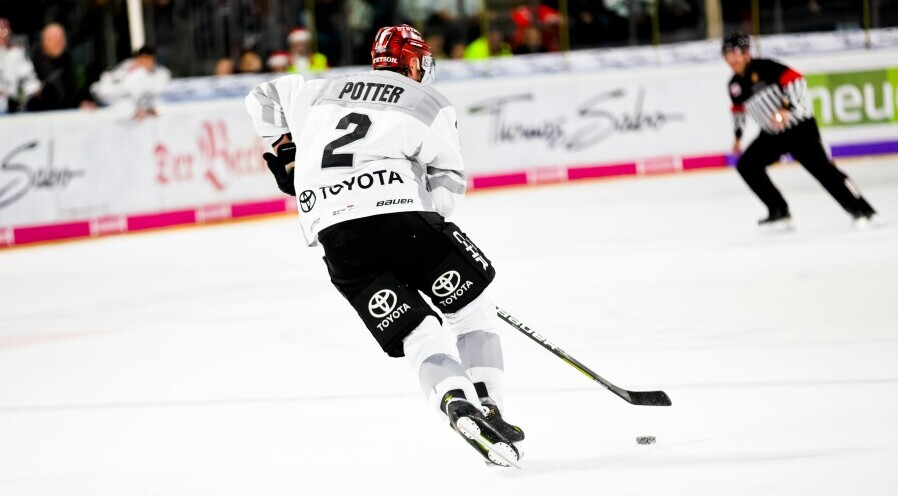Ever found yourself at a hockey game trying to figure out why the referee blew the whistle, and everyone skated back to the blue line? Let’s demystify the infamous offside rule, a pivotal part of hockey that leaves many scratching their heads.
In this guide, we’re diving deep into the offside rule, breaking it down into bitesize pieces so you can follow the game like a pro. Imagine never missing a beat during a fast-paced match and knowing exactly why that last play was called offside.
Whether you’re a newbie or looking to sharpen your hockey knowledge, this guide will make those confusing blue-line calls a thing of the past. So, grab your favorite rink-side snack, and let’s get started on the path to becoming a hockey rules guru!
Understanding the Basic Concept of Offside in Hockey
In hockey, the offside rule is all about keeping the game fair and ensuring players don’t gain an unfair advantage. The concept is straightforward: a player cannot enter the offensive zone before the puck does. Sounds easy enough, right?
The rink is divided by two blue lines and a red center line. If a teammate skates across the opposing team’s blue line before the puck, you’ll hear that whistle blow for offside. It’s a rule implemented to keep an even playing field, preventing cherry-picking tactics where players hang out near the opposing goal, waiting for an easy score.
Picture this: the puck is the key that unlocks the offensive zone. Players need to wait until the puck crosses the blue line before they do. If someone gets impatient and crosses early, the referee stops the play, and a face-off happens in the neutral zone.
Understanding this basic rule will not only make watching the game more enjoyable but also amp up your appreciation for the skills and strategy involved. So, next time you’re at a game, impress your friends with your newfound knowledge of the offside rule!

Key Rules and Exceptions to Offside Calls
Now that we’ve gotten a grasp on the basics, let’s dive into some key rules and exceptions to those offside calls that keep everyone on their toes.
First up is the delayed offside. This happens when the puck has crossed the blue line legally, but a player finds themselves offside. The game continues if the player retreats to the neutral zone, giving them a chance to reset without halting the action.
Another important aspect is the intentional offside. This occurs when a player knowingly enters the offensive zone early with the puck far behind. In this case, the face-off is moved all the way back to the player’s defending zone, posing a bigger penalty for their team.
But, here’s a little twist: sometimes an offside can be waived off. This can occur if the defending team deliberately carries or passes the puck back into their own zone, allowing attacking players to regain entry without penalty.
Understanding these exceptions adds depth to the game’s strategy and quickly makes you realize there’s a lot more than meets the eye. With these rules in mind, you’ll catch all the nuances during a fast-paced match.
Impact of Offside Calls on Gameplay and Strategy
Offside calls play a huge role in shaping how teams approach a game. They’re a bit like chess moves—forcing teams to think a couple of steps ahead. When a team’s nearing their opponent’s blue line, they have to synchronize their movements perfectly. One mistimed entry, and it’s all back to the drawing board with a face-off in the neutral zone.
Building Offensive Momentum
For attacking teams, staying onside is crucial for maintaining momentum. The constant need to anticipate and react can make or break an offensive rush. Teams often use these split-second scenarios to practice timing and passing precision.
On the defensive side, players are always on high alert, ready to exploit any tiny mistake to turn the puck over and launch a counterattack. The delicate balance of pressure and patience becomes a decisive factor in catching opponents off guard.
Simultaneous Pressure and Patience
Offside rules lead to strategic plays like dump-and-chase, where the puck is dumped into the offensive zone to allow players to skate after it once they’re back onside. This not only keeps up the pressure but also tires out the opponents if executed well.
Ultimately, mastering the offside rules and their strategic implications can give teams an edge, allowing them to maintain control over the fast-paced ebb and flow of a hockey game. Understanding these dynamics makes every second on the ice count for both players and fans alike.
Strategies to Avoid Being Caught Offside
Avoiding offside can seem like threading a needle on skates, but with the right strategies, players can markedly reduce these calls. First off, communication is king. Teammates need to keep each other in the loop about their positioning on the ice. A quick shout or secret hand signal can prevent many unnecessary whistles, keeping the play alive and the crowd on their toes.
Perfecting Timing and Tempo
Timing your entry into the offensive zone is like orchestrating a dance. Forwards should pay attention to the flow of the game and adjust their speed accordingly. Sometimes, players need to slow down their entry or take a quick pivot to ensure the puck crosses the line before they do. This delicate dance becomes second nature with practice and helps create more scoring opportunities.
Then there’s the classic give-and-go move. By passing the puck to a teammate and skating into open space, players can avoid an offside position while setting up for a potential scoring chance. This creates dynamic play and keeps opponents guessing.
Reading the Defense
Players who master the art of reading the opposing team’s defensive setup can anticipate their moves, adjusting their routes in response. This anticipates possible obstacles or traps laid out by the defense, letting players keep their heads up while finding open lanes.
Consistent practice and staying mindful of positioning make dodging offside calls a skillful challenge rather than a frustrating penalty. With these strategies in their arsenal, teams can elevate their gameplay and make every attack count.
The Bottom Line: Mastering the Offside Rule in Hockey
Ultimately, grasping the offside rule is crucial for any hockey player looking to excel on the ice. It may seem daunting at first, but with time and practice, it can become second nature.
Understanding the rule’s nuances can significantly enhance a team’s performance. By ensuring that players are not prematurely entering the offensive zone, teams can maintain fluidity in their attacks, create more opportunities, and importantly, avoid those game-stopping whistles.
The key to mastering the offside rule lies in effective communication and strategic positioning. Players should stay vigilant and aware, always mindful of where they and the puck are in relation to the blue line. By working together and utilizing the strategies we’ve discussed, teams can minimize offside infractions.
Furthermore, practicing coordination and timing during drills can greatly improve a team’s coherence on the ice. It sharpens players’ instincts, allowing them to read plays better and react more swiftly.
Let’s not forget, hockey is a fast-paced sport where split-second decisions make all the difference. Being knowledgeable and prepared regarding the offside rule can thus give players and teams a competitive edge.
In the end, mastering the offside rule is not just about avoiding penalties; it’s about seizing every chance to advance the play creatively and effectively. Remember, every great hockey play starts with a solid understanding of the fundamentals.
So, keep practicing, stay aware, and most importantly, enjoy the game. With patience and dedication, anyone can master the offside rule, enhancing both personal skills and team performance on the ice.

